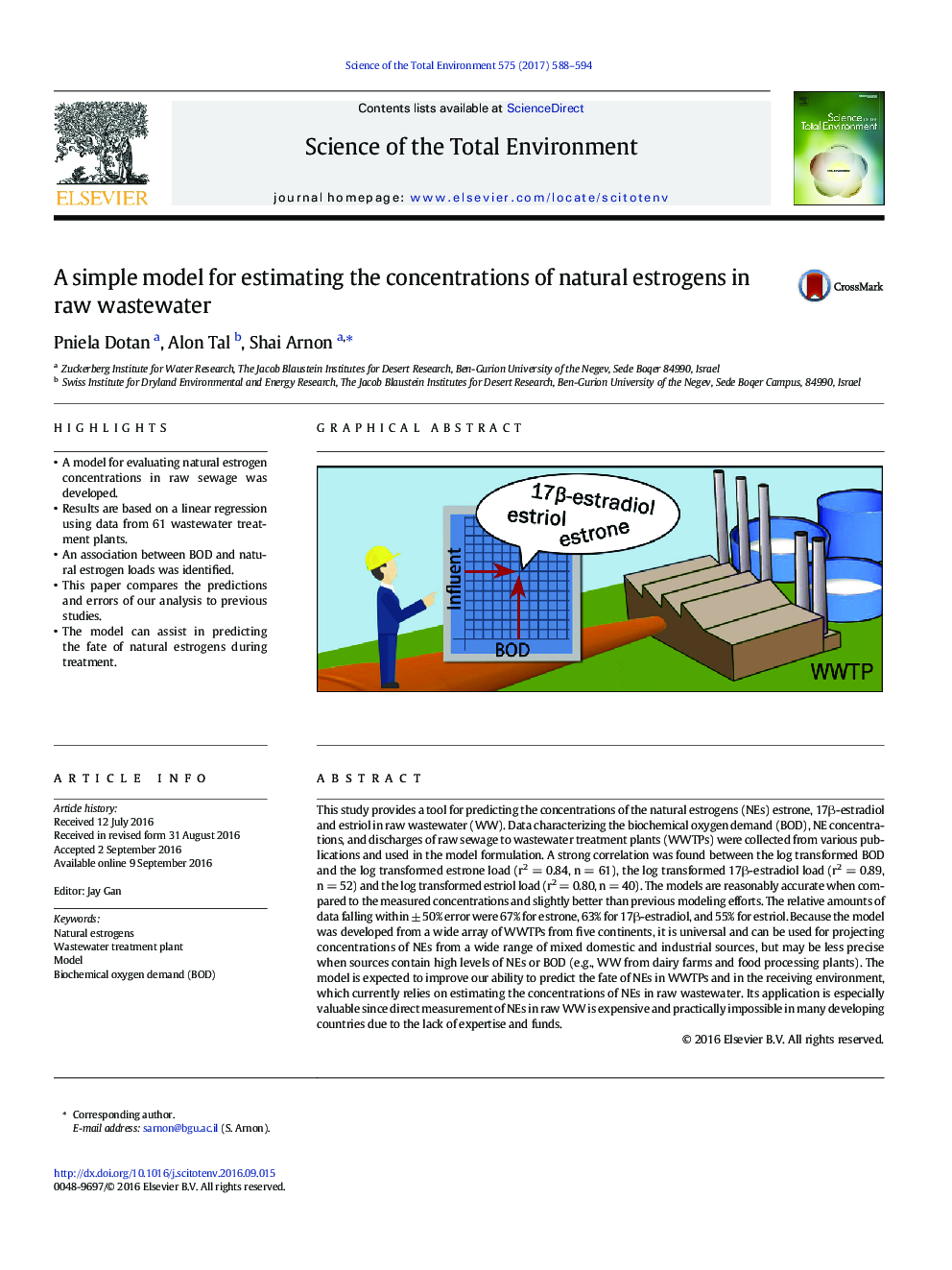| Article ID | Journal | Published Year | Pages | File Type |
|---|---|---|---|---|
| 6319542 | Science of The Total Environment | 2017 | 7 Pages |
â¢A model for evaluating natural estrogen concentrations in raw sewage was developed.â¢Results are based on a linear regression using data from 61 wastewater treatment plants.â¢An association between BOD and natural estrogen loads was identified.â¢This paper compares the predictions and errors of our analysis to previous studies.â¢The model can assist in predicting the fate of natural estrogens during treatment.
This study provides a tool for predicting the concentrations of the natural estrogens (NEs) estrone, 17β-estradiol and estriol in raw wastewater (WW). Data characterizing the biochemical oxygen demand (BOD), NE concentrations, and discharges of raw sewage to wastewater treatment plants (WWTPs) were collected from various publications and used in the model formulation. A strong correlation was found between the log transformed BOD and the log transformed estrone load (r2 = 0.84, n = 61), the log transformed 17β-estradiol load (r2 = 0.89, n = 52) and the log transformed estriol load (r2 = 0.80, n = 40). The models are reasonably accurate when compared to the measured concentrations and slightly better than previous modeling efforts. The relative amounts of data falling within ± 50% error were 67% for estrone, 63% for 17β-estradiol, and 55% for estriol. Because the model was developed from a wide array of WWTPs from five continents, it is universal and can be used for projecting concentrations of NEs from a wide range of mixed domestic and industrial sources, but may be less precise when sources contain high levels of NEs or BOD (e.g., WW from dairy farms and food processing plants). The model is expected to improve our ability to predict the fate of NEs in WWTPs and in the receiving environment, which currently relies on estimating the concentrations of NEs in raw wastewater. Its application is especially valuable since direct measurement of NEs in raw WW is expensive and practically impossible in many developing countries due to the lack of expertise and funds.
Graphical abstractDownload high-res image (129KB)Download full-size image
